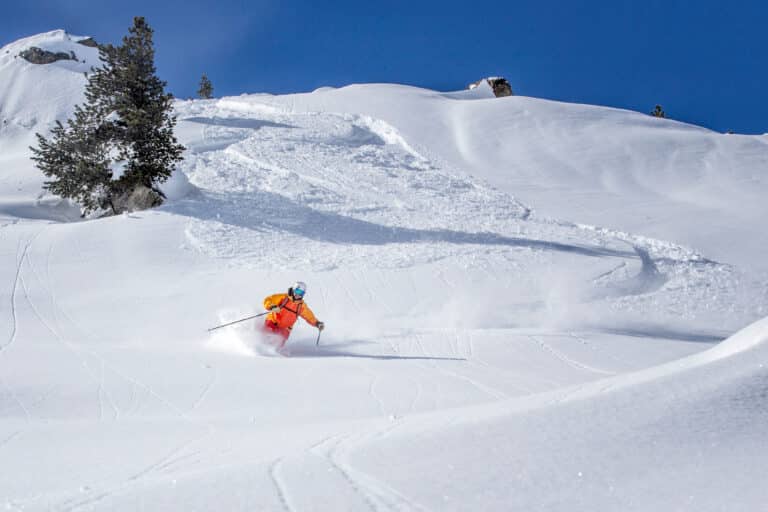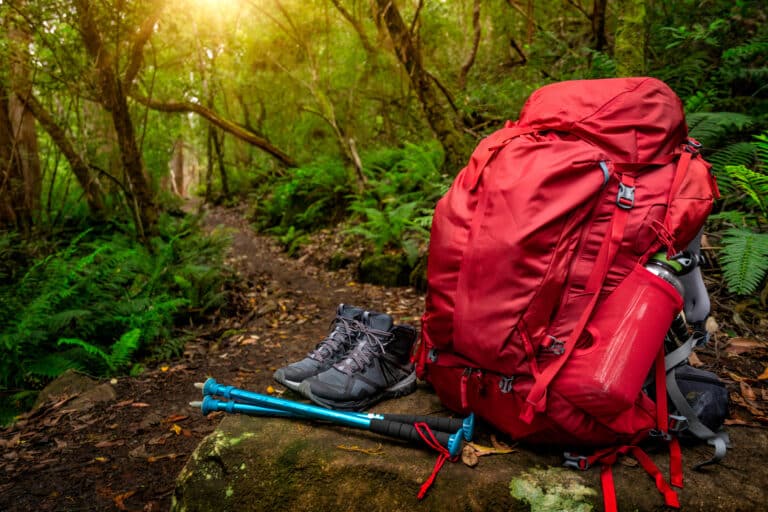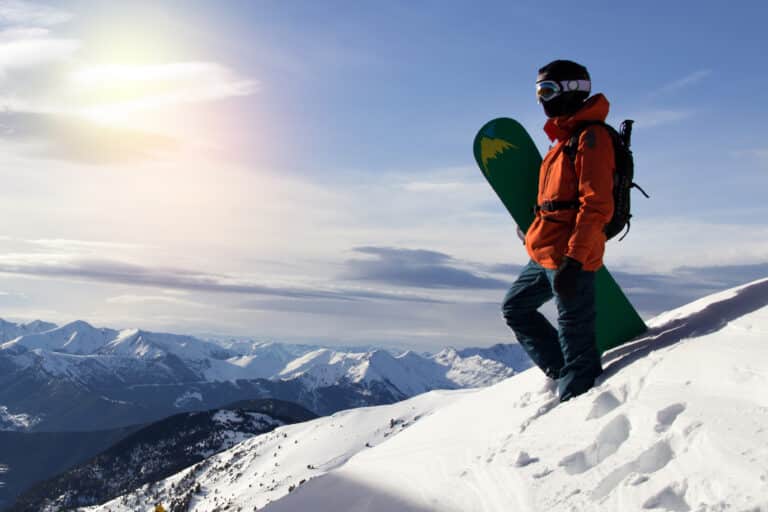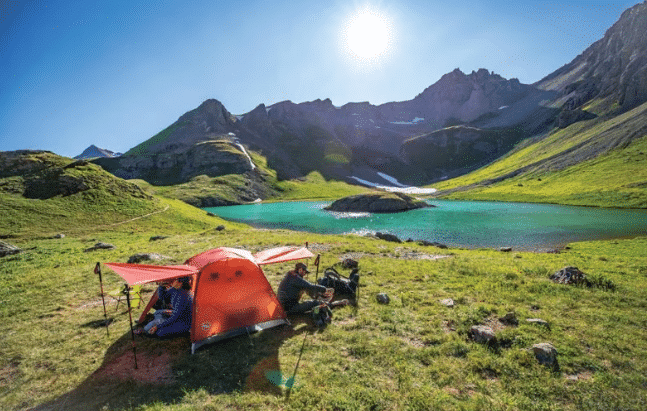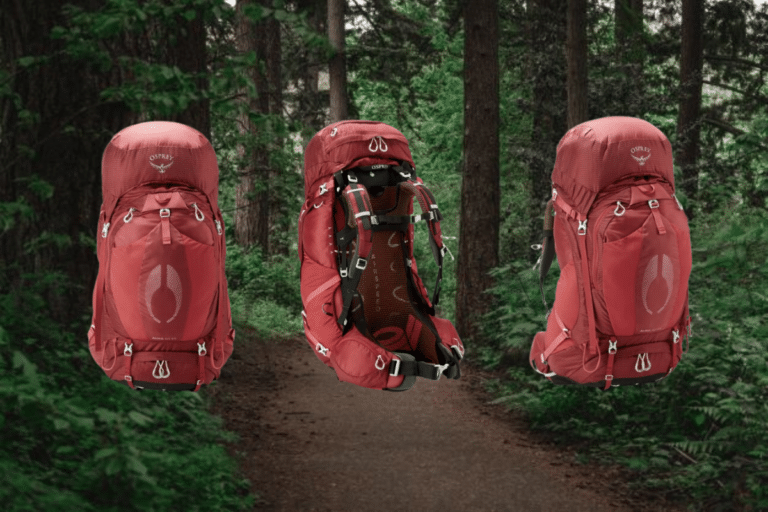10 Best Canopy Tents for Outdoor Adventures in 2024
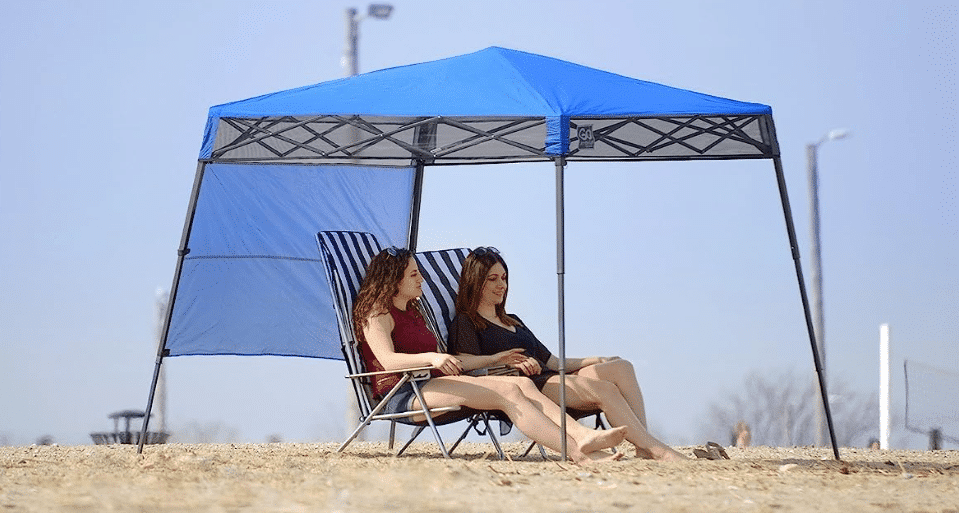
Our content may include affiliate links, through which we earn a small commission on purchases. Want to learn more about us? Read here.
Imagine finding the best canopy tents for camping, offering just the right balance of protection, comfort, and convenience. A reliable camping canopy can make all the difference between an enjoyable outdoor experience and a frustrating one.
In this blog post, we’ll explore the top 10 best canopy tents for camping, catering to various budgets and needs. We’ll also discuss important factors to consider when choosing a canopy tent, such as size, weight, material, ease of setup, and weather resistance. So, let’s dive in and find the perfect canopy tent for your next adventure!
Key Takeaways
This article provides a comprehensive list of the top 10 canopy tents for camping, suitable for various budgets and preferences.
Consider the size, weight, material, ease of setup, and weather resistance when selecting a camping canopy.
Regular cleaning & inspection, as well as anchoring & securing, are essential to maintain durability and functionality.
Top 10 Canopy Tents for Camping
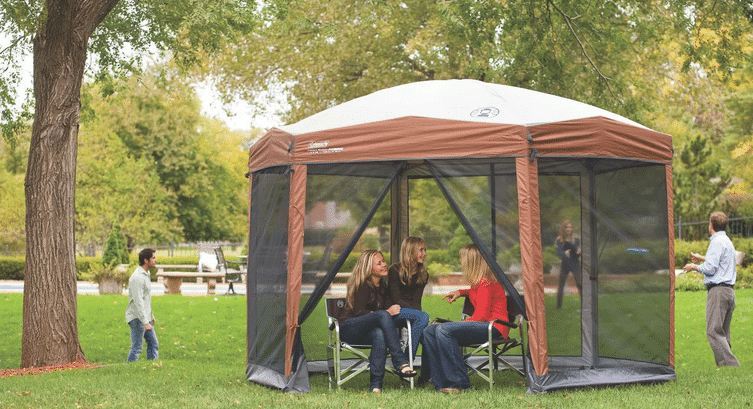
Camping canopies come in all shapes and sizes, each with its unique features and benefits. With so many options available, how do you know which fits your needs best?
We’ve researched and compiled a list of the top 10 canopy tents for camping, ensuring that you’ll find the perfect match for your outdoor adventures. From heavy-duty, waterproof tents to lightweight, easy-to-assemble options, our selections cater to a wide range of budgets and preferences.
Eurmax Standard 10×10 Canopy Tent
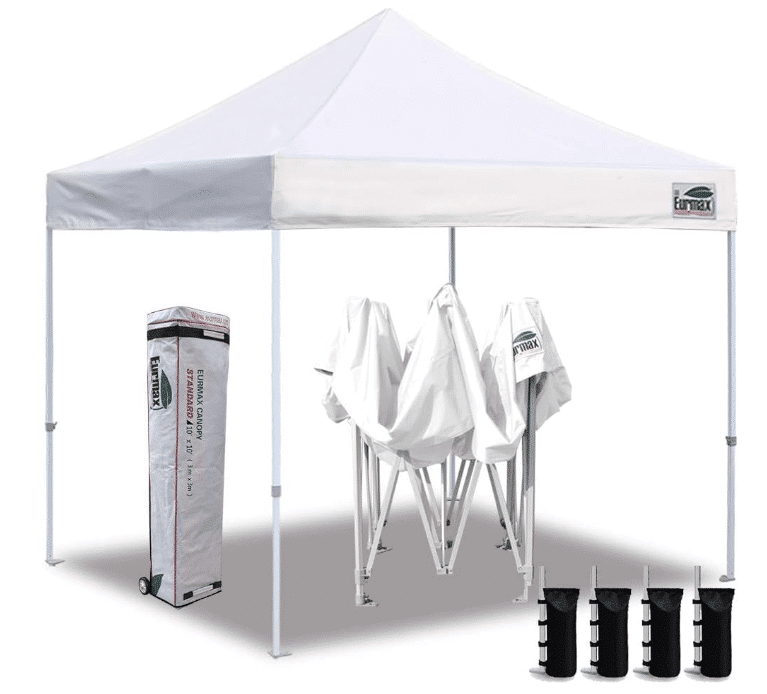
The Eurmax Standard 10×10 Canopy. Tent stands out as a heavy-duty, waterproof, and easy-to-set-up option with the following features:
Rust-resistant steel frame
Adjustable height
100 square feet of coverage
600-denier fabric
These features provide ample space and protection for your camping needs.
While it’s heavier and may not be suitable for smaller vehicles, its durability and ease of setup make it a popular choice among campers.
Coleman Oasis OnePeak Instant Canopy Tent
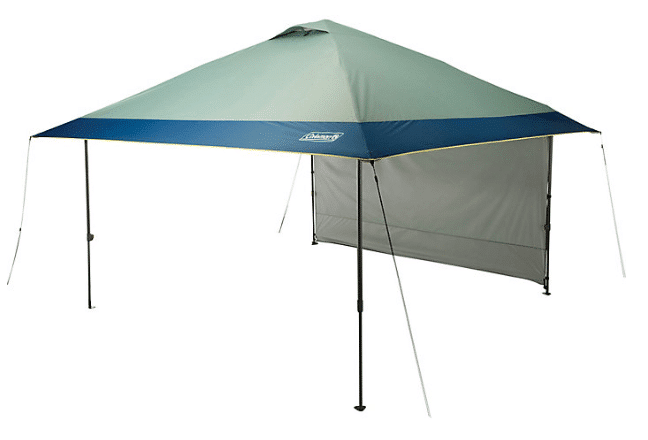
Reliable and sturdy, the Coleman Instant Canopy is an instant canopy. The tent boasts the following features:
UVGuard material for sun protection
One-piece frame for easy setup
Wheeled carry bag for easy transport
Durability for long-lasting use
With these features, you can trust that the Coleman Instant Canopy is reliable. The tent will provide you with a reliable canopy for many upcoming camping trips.
The Coleman Instant Canopy. The tent is a solid choice for campers seeking sun protection and a hassle-free setup experience.
Core Instant Shelter Pop-Up Canopy Tent
Look no further than the Core Instant Shelter Pop-Up Canopy Tent for a lightweight and water-resistant option. Its 100 square feet of floor space and six anchor points provide ample room and stability for your outdoor activities, making it an ideal pop-up tent.
Made from polyester and offering 50+ UPF protection, this canopy tent is perfect for those prioritizing portability and protection from the elements.
Quik Shade Go Hybrid Sun Protection Pop-Up Canopy

Compact and portable, the Quik Shade Go Hybrid Sun Protection Pop-Up Canopy stands out with its features:
Lightweight aluminum frame
UV-resistant fabric
36 square feet of shade coverage
Alumina protection for 99% UV protection
This canopy is perfect for those seeking a convenient and efficient sun protection solution for their camping trips.
It is easy to set up and take down, and the included wheeled carry bag makes it easy to set up and take down.
KingCamp Portable Canopy Tent
Versatility is the name of the game with the KingCamp Portable Canopy Tent. Its unique design provides excellent sun and rain protection, with adjustable height and side walls to suit your needs.
Lightweight and easy to transport, this lightest canopy tent is perfect for campers who value adaptability in their outdoor gear.
CROWN SHADES 10×10 Pop-up Canopy
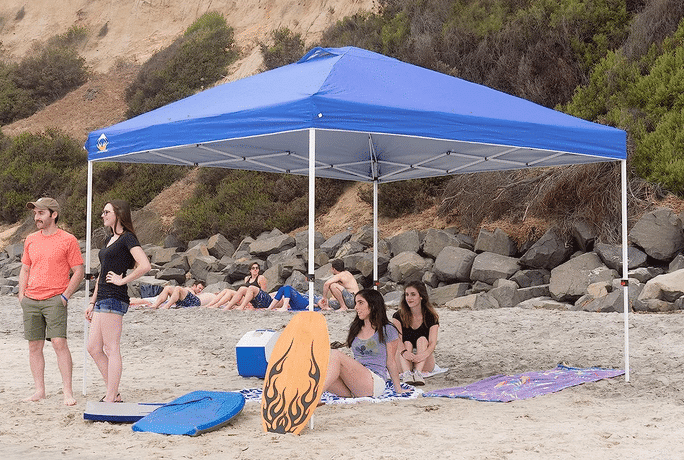
The CROWN SHADES 10×10 Pop-up Canopy is a durable and easy-to-set-up option, featuring a durable steel frame and removable walls for added versatility.
Waterproof and wind-resistant, this canopy tent is perfect for campers who want a reliable and adaptable shelter for their outdoor adventures.
Kelty Sunshade Canopy
Lightweight and easy to assemble, the Kelty Sunshade Canopy is perfect for hammock campers or those seeking a simple sun and rain protection solution. Its polyester fabric and detachable side wall offer excellent coverage, making it a popular choice among campers who value convenience and ease of use.
CLAM Quick-Set Outdoor Camping Gazebo
The CLAM Quick-Set Outdoor Camping Gazebo is a top choice for campers who want a fully enclosed and waterproof option. With excellent insect protection and a quick setup time, this canopy tent offers comfort and convenience during your camping trips.
Eno Eagles Nest Outfitters ProFly Rain Tarp
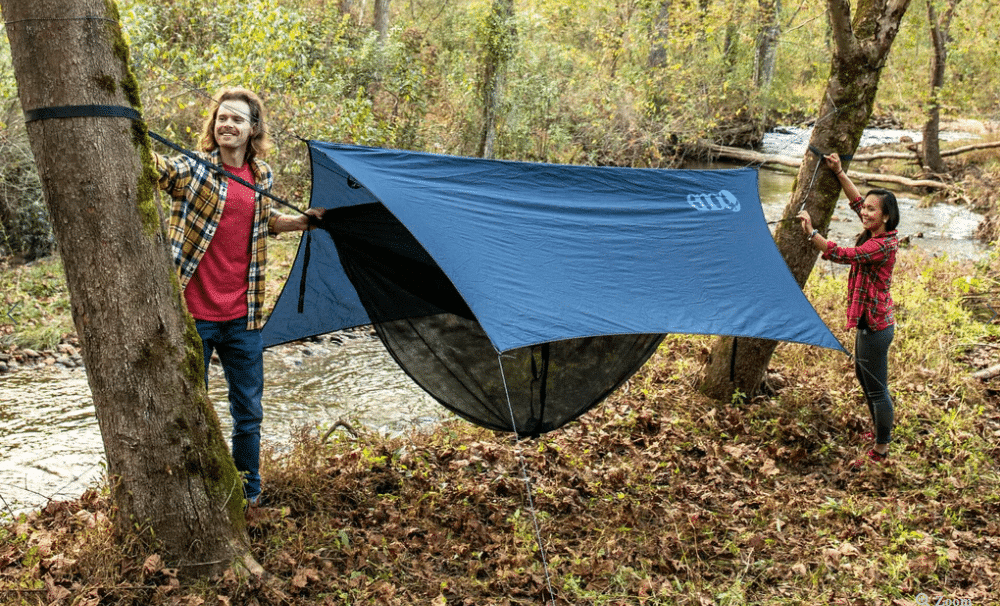
Hammock campers rejoice! The Eno Eagles Nest Outfitters ProFly Rain Tarp is a special camping canopy. It is perfect for those who love hammock camping.
Made from durable ripstop nylon
Six anchor points for added stability
It provides protection from the elements
Ensures a comfortable and dry camping experience
ABCCANOPY Pop-Up Canopy
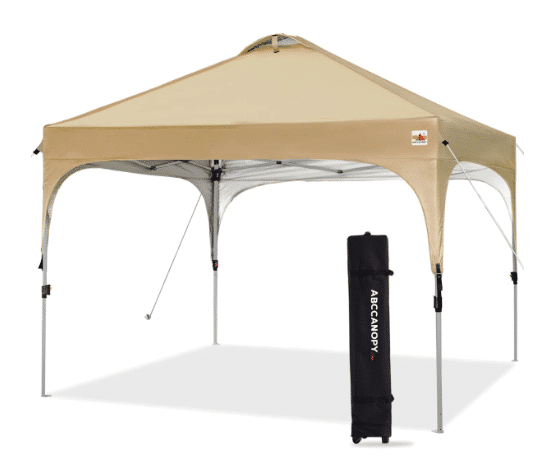
Lastly, the ABCCANOPY Pop-Up Canopy is arguably the best pop-up canopy available, as it is a heavy-duty, waterproof option with a strong steel frame and easy-to-use push-button release mechanisms.
This canopy tent is perfect for campers who want a reliable and sturdy shelter that can withstand various weather conditions, making it the best camping canopy among the best camping canopies available.
Factors to Consider When Choosing a Camping Canopy
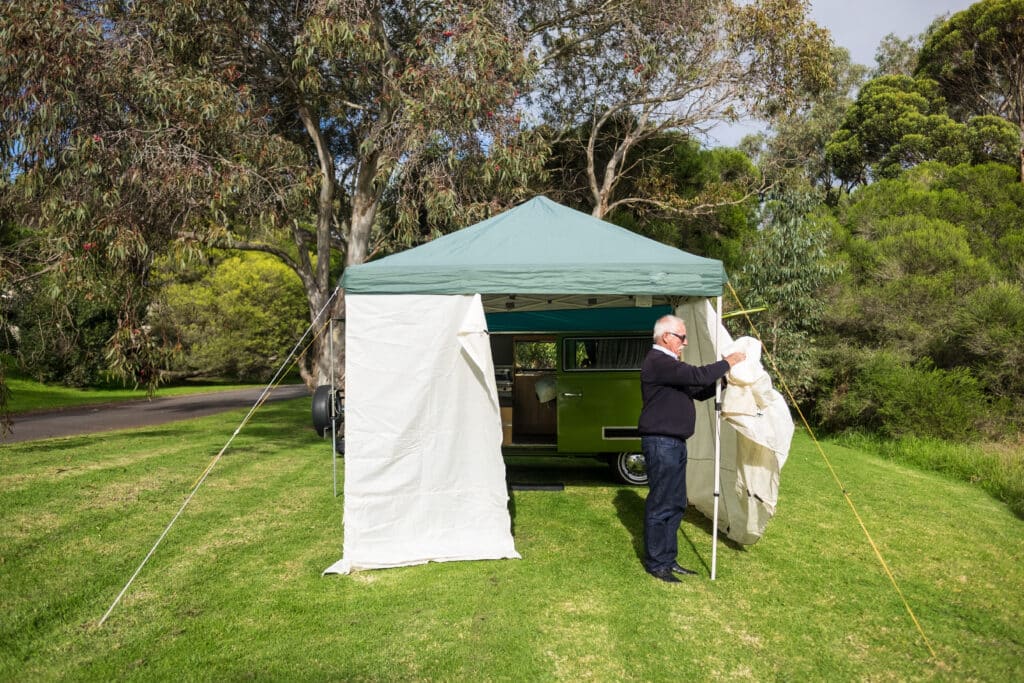
After exploring the top 10 canopy tents for camping, it’s time to consider the factors that will guide your decision-making process based on your specific needs. Some crucial aspects to take into account when selecting the perfect canopy tent for your outdoor adventures are:
Size
Weight
Material
Ease of setup
Weather resistance
Understanding the significance of these factors will enable you to choose a canopy tent that strikes the right balance between protection, comfort, and convenience for your camping trips. In the subsequent subsections, we’ll dissect each factor and offer practical advice to help you choose the ideal camping canopy.
Size and Space
When selecting a camping canopy, consider the floor space and height of the tent to ensure it meets your needs for camping and outdoor activities. Larger canopies are suitable for bigger groups, while smaller options may be more convenient for solo campers or couples.
Remember that pop-up canopies come in various shapes and sizes, ranging from 4×4 feet to 20×20 feet, so you can find the perfect fit for your specific requirements.
Weight and Portability
Especially if you plan to carry it to your campsite, prioritizing a lightweight and portable canopy tent is beneficial. Most camping canopies fall within a weight range of 2-3 pounds, making them easy to transport.
When selecting a canopy tent, prioritize options that come with a carrying bag for added convenience. Remember that lightweight models may be less durable, so balance weight and durability according to your needs.
Material and Durability
Opt for a canopy tent made of durable materials that can withstand various weather conditions and provide long-lasting use. Polyester, polyethylene, and vinyl are popular canopy materials, each with its advantages and drawbacks.
Polyester is lightweight and water-resistant, while polyethylene offers superior weather resistance. Vinyl is robust and provides excellent protection, but it can be bulky and more difficult to transport.
Consider the benefits and drawbacks of each material before making your decision.
Ease of Setup and Takedown
Select a canopy tent that is easy to set up and take down, with minimal effort and time required. Some canopy tents, such as the Pacific Breeze Easy Up and the Tangkula 10×10 Ft Pop Up Canopy, are known for their quick and hassle-free setup process.
Look for features such as one-push center lock technology, easy-to-use push-button release mechanisms, and simple assembly instructions to ensure a smooth setup and takedown experience.
Weather Resistance
Ensure the canopy tent provides adequate wind protection and protection against sun and rain for a comfortable camping experience. Most pop-up canopies, including straight-leg canopies, can withstand light winds of up to 10 miles per hour, while slanted-legged canopies offer improved stability.
Canopies with the following features are recommended for optimal weather resistance:
Waterproof ratings of at least 1000mm
UV protection
Durable materials
Strong wind resistance
Prioritize these features for the best worry-free camping experience.
Tips for Proper Canopy Tent Maintenance
Following proper maintenance guidelines is key to prolonging the lifespan and maintaining the functionality of your canopy tent. Regularly cleaning, inspecting, and securing your canopy tent can prevent damage and ensure it remains a reliable shelter for your camping trips.
In the subsequent subsections, you’ll find detailed advice and tips for each aspect of canopy tent maintenance, aiding you in keeping your camping shelter in optimal condition.
Cleaning and Storage
Clean your canopy tent regularly and store it properly to prevent damage and prolong its life. Use a non-abrasive sponge, cold water, and a non-detergent soap to clean the canopy. A soft bristle brush and warm water with dishwashing or hand soap can be used for the frame.
Ensure the canopy is completely dry before storing it in a cool, dry environment to prevent mildew and mold growth. Avoid storing the tent in direct sunlight or in humid areas, as this can cause damage over time.
Regular Inspections
Check your canopy tent for any signs of wear or damage and address any issues promptly to maintain its durability and functionality. Inspect the canopy fabric for tears, rips, or holes, and check the frame for signs of rust or corrosion.
Ensure that all poles and connectors are secure and in good condition. Regular inspections will help you identify and address potential issues early, preventing further damage and prolonging the life of your tent.
Anchoring and Securing
Properly anchor and secure your canopy tent to prevent it from blowing away or collapsing during windy conditions or storms. To secure the canopy to the ground, use heavy-duty metal stakes or weighted bags filled with sand, which can be attached to the canopy frame or driven into the ground.
Some canopy tents also provide sandbags that connect to the legs and serve as anchors. By anchoring and securing your tent, you can ensure a safe and stable shelter during your camping adventures.
Summary
Finding the perfect canopy tent for camping is crucial for a comfortable and enjoyable outdoor experience. By exploring the top canopy tents available, considering important factors such as size, weight, material, ease of setup, and weather resistance, and following proper maintenance guidelines, you can ensure a reliable and durable shelter for your camping adventures.
Whether you’re planning a family camping trip or a solo getaway, having a reliable and functional canopy tent is essential for a comfortable and enjoyable experience. Invest in a high-quality canopy tent that meets your needs, and enjoy the great outdoors with confidence and peace of mind.
Frequently Asked Questions
What are the most important factors to consider when choosing a camping canopy?
When selecting a camping canopy, there are several key factors to consider for the best outdoor experience. The size and space requirements are crucial; the canopy should accommodate the number of people using it and provide enough space for activities and storage while fitting comfortably within the camping area.
Material and durability are also important, with materials like polyester and polyethylene being popular for their resilience to weather elements and UV protection. Weather resistance is a must, as the canopy should offer adequate protection against sun, rain, and wind, often achieved through water-resistant coatings and sturdy frame design.
Ease of setup and portability are significant for campers who travel, so a canopy that’s lightweight, easy to assemble, and comes with a carrying case is ideal. Stability is another vital aspect, and a good camping canopy should include a reliable anchoring system, such as stakes, guy lines, and weight bags, to secure it in various ground conditions.
Ventilation is key, especially in warmer climates, so features like mesh windows or air vents are beneficial. Lastly, additional features like mosquito netting, side walls, and storage pockets can greatly enhance the functionality and comfort of the camping canopy, making the outdoor experience more enjoyable and convenient.
How can I properly maintain my canopy tent?
Proper maintenance of your canopy tent is essential to ensure its longevity and functionality. To start, always clean the canopy after use. Gently brush off any loose dirt or debris, and for tougher stains, use mild soap and water, avoiding harsh chemicals that can damage the fabric.
After cleaning, it’s crucial to completely dry the canopy before storing it to prevent mold and mildew growth. Keep the tent in a cool, dry place, ideally in its original bag or a protective cover for storage. This protects it from dust and pests.
Regularly inspect the canopy for any tears or damage, especially after exposure to harsh weather conditions. Prompt repairs can prevent small issues from becoming major problems. It’s also important to check the frame and joints, lubricating any moving parts if necessary to keep them functioning smoothly.
When setting up and taking down your canopy, do so carefully to avoid bending the frame or causing unnecessary stress on the fabric. Lastly, be mindful of the weather conditions when using the canopy. Avoid using it in extreme weather, like heavy rain or strong winds, as these conditions can cause damage.
By following these simple maintenance steps, your canopy tent will remain in good condition, serving you well for many outdoor events and activities.
How do I secure my canopy tent during windy conditions?
Securing your canopy tent in windy conditions requires a few key steps to ensure stability and safety. First, use heavy-duty stakes to anchor each leg of the tent firmly into the ground. If you’re on a hard surface where stakes can’t be used, weighted bags or anchor weights are essential.
Each leg of the canopy should have its weight, ideally ranging from 20 to 50 pounds, depending on the wind’s strength. Additionally, use guy ropes or tie-downs attached to the top corners of the tent and anchored to the ground or weights, creating extra points of stability.
It’s also beneficial to adjust the tent’s height to its lowest setting, as this reduces the surface area exposed to the wind and lowers the center of gravity. For added safety, regularly check the tension in the ropes and the integrity of the anchors throughout the event, especially if the wind strength increases.
Extreme wind conditions can be hazardous, and it’s sometimes safer to dismantle the tent temporarily to avoid damage or accidents.
Which materials are commonly used in canopy tents?
Canopy tents are typically constructed from materials chosen for their durability, weather resistance, and ease of maintenance. The most common fabric for the canopy is polyester, favored for its strength, lightweight nature, and resistance to shrinking and stretching. Polyester canopies often have special coatings for added UV protection and water resistance.
Another popular material is polyethylene, a heavier and more durable option that provides excellent protection against the elements and is often used for more permanent or semi-permanent structures.
Manufacturers usually opt for either aluminum or steel frames for the frames. Aluminum frames are lightweight, making them easy to transport, set up, and resist corrosion. However, they may be less sturdy in strong winds than steel frames. On the other hand, steel offers greater strength and stability, but it’s heavier and may be prone to rust if not properly treated or coated.
In high-end models, you might find advanced materials like vinyl-coated polyester, which is extremely durable and weatherproof, making it suitable for professional-grade or heavy-duty applications. Each of these materials brings its own advantages, and the choice often depends on the user’s specific needs, like portability, durability, and the level of weather protection required.
How do I properly set up a tent canopy?
- Unpack and Lay Out All Parts: Start by unpacking the tent canopy and laying out all the parts, including the frame, canopy top, stakes, and other accessories.
- Assemble the Frame: Connect the frame pieces according to the manufacturer’s instructions. Most frames have a click-in or snap-together design for ease of assembly.
- Attach the Canopy Top: Spread the canopy top over the assembled frame. Secure it by attaching the Velcro straps or ties to the frame corners and sides.
- Secure the Canopy: Use the provided stakes or weights to anchor the tent canopy to the ground, ensuring it remains stable in windy conditions.
- Adjust for Tension: Make necessary adjustments to ensure the canopy top is taut and evenly distributed across the frame.
What materials are best for tent canopies?
- Frame Material: Aluminum and steel are popular choices. Aluminum is lightweight and resistant to rust, making it ideal for portability and outdoor use. Steel is heavier but more durable, offering better stability.
- Canopy Material: Polyester and polyethylene are commonly used for canopy tops. Polyester is durable, water-resistant, and offers good UV protection. Polyethylene is also durable and waterproof but may be heavier.
- UV and Water Resistance: Ensure the canopy material has a UV-resistant coating to protect against sun damage and a water-resistant coating for protection against rain.


